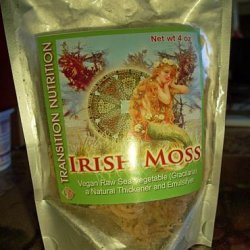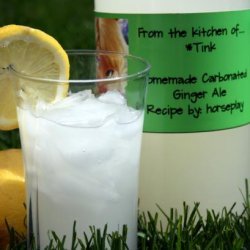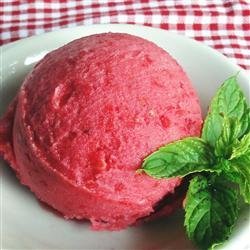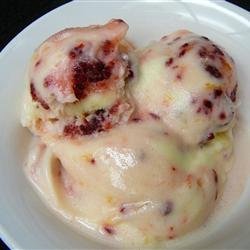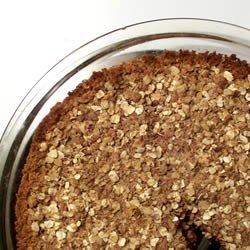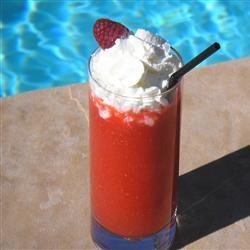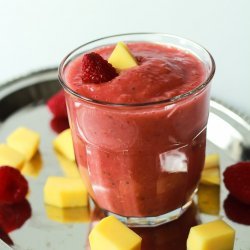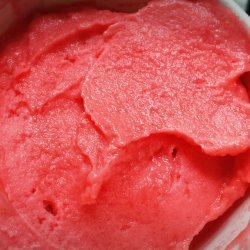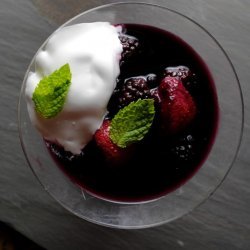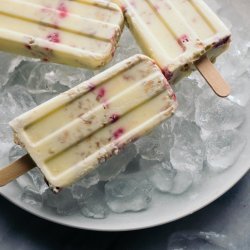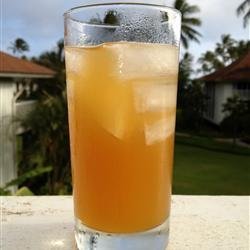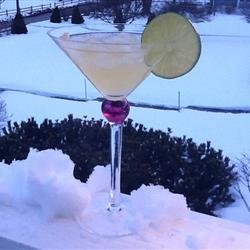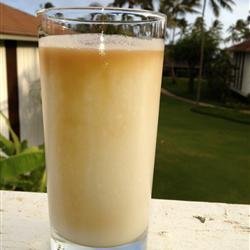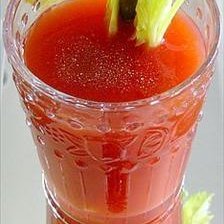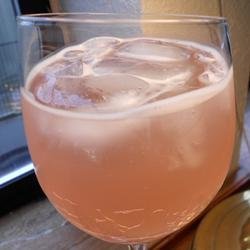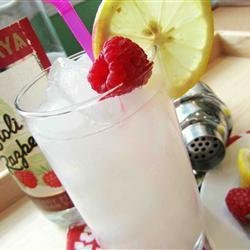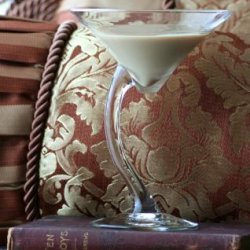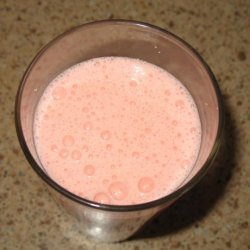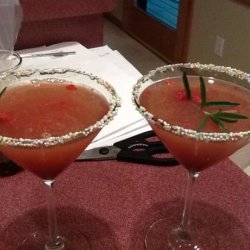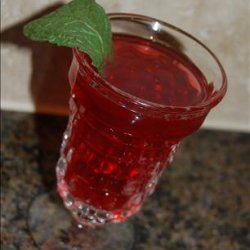Ingredients:
- 3 -3 1/2 gallons pure mineral water
- 2 oz crystal malt (64 degrees lovibond color rating; crushed)
- 2 oz belgian biscuit malt, crushed
- 1 oz cascade whole leaf hop (5% alpha acid; for bittering)
- 1/4 oz cascade whole leaf hop (5% alpha acid; for aroma and flavor)
- 1 wyeast # 1272 american ale ii liquid yeast culture (or 1 package. dry ale yeast)
Directions:
- If using liquid yeast, smack-pack , pop inner seal and let yeast activate per package directions.
- Sanitize a 5 gallon fermenter and airlock.
- Steep the specialty grains (crystal and biscuit malts) in a fine-mesh grain bag in one gallon of water at 155F for 20 minutes.
- Raise temperature to 175F, removing grains after 10 additional minutes (30 minutes total steep time).
- Add malt extract and bring to a boil, stirring occasionally to prevent sticking.
- Add 1 ounce bittering hops in a cheesecloth hop bag.
- Continue to boil, adjusting heat as necessary, for 25 minutes (no further stirring).
- Add approximately 1/8 ounce of hops to boiling wort in another hop bag.
- Continue boiling for 10 more minutes.
- Add Irish moss and stir in gently.
- Add remaining hops in a hop bag.
- Boil for a final 10 minutes (total boil time 45 minutes).
- Add honey and let sit for 10 minutes.
- Remove brew pot from stove and chill wort using your preferred method (you may opt to set the pot in an ice water bath).
- If using dry yeast, proof it per package directions.
- When wort temperature reaches 100F, top up with cool water to just over 2 1/2 gallons.
- Stir to swirl, cover, and let sit on stove or counter for 30 minutes.
- Pour yeast slurry into fermenter.
- Transfer wort to fermenter, using a racking cane and hose (one method to start to siphon is to fill hose with water, keeping cane and free tube end both elevated; cover tube end, place cane into brewpot, and release tube in fermenter).
- Try to avoid the material settled in the bottom of the brewpot (this stuff is called trub).
- Allow the wort to splash and aerate.
- Put on cover or install drilled stopper and affix airlock, filling airlock halfway with distiller water or grain alcohol.
- Set fermenter in a safe area.
- Room temperature should be in the range of 60-70F.
- Avoid sunlight on your fermenter.
- Fermentation should be evident within a day or so; monitor activity.
- When activity is slowing, sanitize a 3 or 5 gallon fermenter (preferably glass) and racking cane and hose.
- Place raspberries in secondary fermenter (do not boil fruit- it will set the pectin and create a bad haze in the finished beer; if you're concerned about wild yeast on fresh berries, steep them at 165F for 10 minutes, then drain and cool).
- Rack beer onto fruit.
- Affix airlock.
- Allow to sit again.
- Secondary fermantation will be slower and less vigorous.
- Be careful and watch the fermentation- if the fermentation is vigorous,a piece of fruit could possibly block the airlock (if this happens, remove the airlock and use a blow-off tube).
- Leave on berries for 2-4 weeks, until they appear pale pink.
- Fruit may sink when beer is ready to bottle.
- Sanitize bottles (and bottling equipment) or kegging equipment.
- Boil corn sugar in a cup of water for 10 minutes, then cool to room temperature.
- Pour corn sugar solution into bottling bucket.
- Rack beer into bucket, avoiding yeast sediment in fermenter.
- Stir gently to mix well.
- Fill bottles and cap.
- Allow to condition and age for at least one month.
- For any further information on homebrewing, a good reference is The New Complete Joy of Homebrewing by Charlie papazian; it has a good intro to basic techniques and processes.
Nutrition Facts
| Amount Per 1 Serving | |||
| Calories | 3463.09 Kcal (14499 kJ) | ||
| Calories from fat | 17.65 Kcal | ||
| % Daily Value* | |||
| Total Fat | 1.96g | 3% | |
|---|---|---|---|
| Cholesterol | 0.02mg | 0% | |
| Sodium | 87.16mg | 4% | |
| Potassium | 1264.46mg | 27% | |
| Total Carbs | 824.73g | 275% | |
| Sugars | 105.16g | 421% | |
| Dietary Fiber | 19.58g | 78% | |
| Protein | 19.59g | 39% | |
| Vitamin C | 87.1mg | 145% | |
| Iron | 6.2mg | 34% | |
| Calcium | 226.9mg | 23% | |
| Amount Per 100 g | |||
| Calories | 263.41 Kcal (1103 kJ) | ||
| Calories from fat | 1.34 Kcal | ||
| % Daily Value* | |||
| Total Fat | 0.15g | 3% | |
|---|---|---|---|
| Cholesterol | 0mg | 0% | |
| Sodium | 6.63mg | 4% | |
| Potassium | 96.18mg | 27% | |
| Total Carbs | 62.73g | 275% | |
| Sugars | 8g | 421% | |
| Dietary Fiber | 1.49g | 78% | |
| Protein | 1.49g | 39% | |
| Vitamin C | 6.6mg | 145% | |
| Iron | 0.5mg | 34% | |
| Calcium | 17.3mg | 23% | |
* Percent Daily Values are based on a 2000 calorie diet. Your daily values may be higher or lower depending on your calorie needs.
Find out how many calories should you eat.
Get Your Recipe of Health!
Follow RecipeOfHealth on Facebook!



